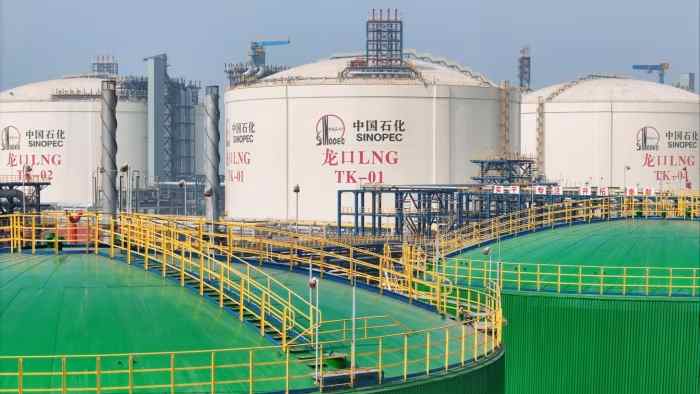
Asian countries are reevaluating their energy strategies amid the possibility of signing liquefied natural gas supply agreements with the United States. The initiative aims to adjust the trade balance with Washington in the face of the tariffs imposed by the US government, according to sector analysts.
Japan and South Korea evaluate participation in an Alaska export project, estimated at US $ 44 billion, with the support of former US President Donald Trump. Other economies in the region, such as Bangladesh, India, Vietnam and Philippines, are also under negotiations with US companies for the acquisition of LNG.
According to Think Tank Embber report, Asia is the region with the highest global exposure to the impact of fossil fuels dependence. By 2022, about a quarter of the world’s countries compromised more than 5% of their Gross Domestic Product (GDP) with oil, gas and coal imports.
Embber’s analysis points out that technologies such as electric vehicles, solar, wind power and heat pumps could reduce the need for fossil fuels by Asian countries by up to 70%. However, the advancement of these alternatives may be impacted by changes in US commercial policy.
Sam Reynolds, researcher at the Institute of Energy Economy and Financial Analysis (IEEFA), warns of the risks of long -term agreements with suppliers from the United States.
“Signing long -term commitments to buy US LNG would be a costly mistake. US LNG prices are no longer competitive with other sources of energy and are getting more expensive every day,” he said.
Reynolds adds that US liquefaction costs are elevated due to rates applied to inputs such as steel and aluminum, which makes new export projects more expensive. In addition, gas prices at Henry Hub, the global reference of the sector, should also be discharged in the coming months.
US tariffs in force include 25% on steel and aluminum imports, and 10% on various products. New rates, recently announced, were temporarily suspended for three months, while commercial negotiations with affected countries are continued, including several from Asia.
According to Reynolds, contracts with US suppliers would expand the exhibition of Southern and Southeast Asian countries to gas prices volatility and US commercial policy instability. The researcher notes that the high cost of LNG compromises the development of distribution infrastructure and makes it difficult to grow demand.
Alternative to the US contracts, analysts suggest that Southeast Asia countries invest in the diversification of their energy matrices. The recommendation includes increased generation from renewable sources and intensive use of clean technologies such as solar and wind energy.
Muyi Yang, Senior Analyst at Embber, states that building a renewable sources -based energy infrastructure can act as protection against commodity price variations and exchange risks.
“This is an opportunity for Southeast Asia to climb in the value chain – to be seen mainly as low -cost assemblers to become a leader in the project and the construction of more advanced clean energy technologies,” he said.
Yang advocates investment in research and development of high value -added technologies, which would allow the region to occupy a strategic position in the global transition to low carbon energy sources. According to him, diversification could also reduce the impacts of commercial restrictions imposed by the US.
The expert adds that, even in the face of possible interruptions in exports to the United States, Southeast Asian countries can reorient their production of renewable equipment for emerging markets from Africa, the Middle East and South America, as well as developed markets with a lower commercial barrier.
Another path cited is the strengthening of the clean energy market. The region has relevant natural resources for the expansion of renewable generation, such as the solar and wind potential of Indonesia, Vietnam and Philippines, according to industry experts.
Tim Daiss, founder of Apac Energy Consultancy, evaluates that the use of LNG as a source of energy can make decarbonization goals difficult.
“It would not only be countries like Vietnam, Philippines and Bangladesh that would face problems, even the way from India to Zero liquid would become more complicated,” he said.
He also points out that Japanese companies, which already invest significantly in gas, can allocate additional US LNG volumes for Asian markets, expanding supply in the region.
Embber report indicates that renewable energy has greater future expansion potential than fossil fuels.
The International Energy Agency estimates that by 2030 emerging and developing countries will represent 70% of the solar energy market, 60% of wind energy and 60% of storage in batteries.
In Thailand, Climate Finance Director Network, Sarinee Findavanuntakul, says that the strategy of making the country a LNG center in Southeast Asia can meet short -term demand but involves long -term risks.
According to her, the LNG infrastructure risks becoming unfeasible in the face of the fall in renewable sources costs and the global decarbonization trend.
Avavanuntakul states that “almost half of the LNG terminals currently in operation and proposed in the world can become economically unfeasible in the long run,” citing IEEFA study.
She also warns that the Thai government can expand its LNG imports as a bargain strategy in negotiations with the US, which can aggravate the risks associated with tariffs and compromise the competitiveness of energy in the country.
Source: https://www.ocafezinho.com/2025/04/29/acordos-de-gnl-com-os-eua-colocam-em-risco-metas-de-energia-limpa-na-asia/

